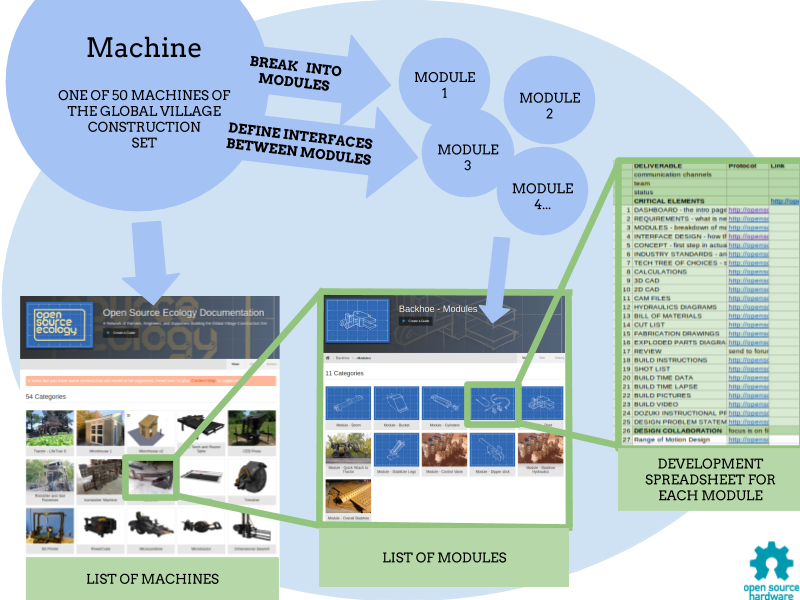Module Based Design
In general, module based design is another name for modular design.
For machine design, this is a method of design where machines are broken into independent modules - and even the modules are broken down into further components. This allows for parallel design and builds. The key to effective collaborative design is the ability to break a complex system into small parts, and defining a clear interface between parts so they fit together into a working whole.
Developers document all work as links in the Development Spreadsheet, such that the overall documentation platform becomes a one-stop-shop for finding all past work. Each machine or module typically goes through several prototype iterations. Finding the vast amount of past work is critical. With our platform, it takes 3 clicks from Machine (50)-> Module (12) -> Development Spreadsheet (100) to access any of the 60,000 items for one prototype - or about a quarter million items total over 4 prototypes. The 100 development items are broken down approximately 1/2 between technology and enterprise. In order to make collaborative development by a large, diverse, community possible – the key is making the information easy to access: by providing excellent information architecture – and by making information bite-sized.
This type of process can in principle be used to solve large problems with thousands of people collaborating - over a few days. This is the model that OSE is developing.
See more information on the Construction Set Approach - which is about synthesizing modules into multiple larger systems.
